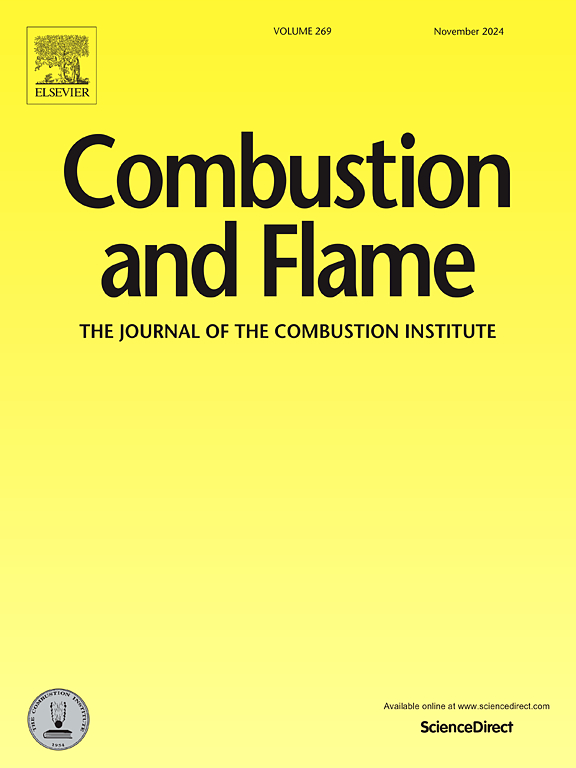A computational study of differential diffusion characteristics in NH3/H2/N2-air non-premixed jet flames
IF 5.8
2区 工程技术
Q2 ENERGY & FUELS
引用次数: 0
Abstract
Partial cracking of ammonia presents a practical solution to the challenges posed by the low laminar burning velocity and high autoignition energy of pure ammonia. On the other hand, the presence of hydrogen in the fuel can induce significant differential mass diffusion in turbulent non-premixed flames. In this study, a direct numerical simulation (DNS) of a temporally evolving planar jet NH3/H2/N2-air non-premixed flame was conducted to investigate the characteristics of differential diffusion in partially cracked ammonia flames. A recently proposed extended mixture fraction definition was employed to consider the effect of nitrogen element. The results indicate that the conditional mean temperature and mass fractions of major species consistently fall between those predicted by the two laminar flamelets, calculated using the mixture-averaged diffusion model and the unity Lewis number. Differential diffusion was quantitatively characterized by the difference in the mixture fractions of hydrogen and nitrogen elements. In the turbulent non-premixed flame with a high Reynolds number of 23,000, the extent of differential diffusion still reaches 60% of that observed in laminar condition. Moreover, a spatial filtering analysis in the context of large eddy simulation (LES) confirmed that differential diffusion is not reflected in the subgrid species flux, as it arises from the convection term rather than the diffusion term.
求助全文
约1分钟内获得全文
求助全文
来源期刊

Combustion and Flame
工程技术-工程:化工
CiteScore
9.50
自引率
20.50%
发文量
631
审稿时长
3.8 months
期刊介绍:
The mission of the journal is to publish high quality work from experimental, theoretical, and computational investigations on the fundamentals of combustion phenomena and closely allied matters. While submissions in all pertinent areas are welcomed, past and recent focus of the journal has been on:
Development and validation of reaction kinetics, reduction of reaction mechanisms and modeling of combustion systems, including:
Conventional, alternative and surrogate fuels;
Pollutants;
Particulate and aerosol formation and abatement;
Heterogeneous processes.
Experimental, theoretical, and computational studies of laminar and turbulent combustion phenomena, including:
Premixed and non-premixed flames;
Ignition and extinction phenomena;
Flame propagation;
Flame structure;
Instabilities and swirl;
Flame spread;
Multi-phase reactants.
Advances in diagnostic and computational methods in combustion, including:
Measurement and simulation of scalar and vector properties;
Novel techniques;
State-of-the art applications.
Fundamental investigations of combustion technologies and systems, including:
Internal combustion engines;
Gas turbines;
Small- and large-scale stationary combustion and power generation;
Catalytic combustion;
Combustion synthesis;
Combustion under extreme conditions;
New concepts.
 求助内容:
求助内容: 应助结果提醒方式:
应助结果提醒方式:


